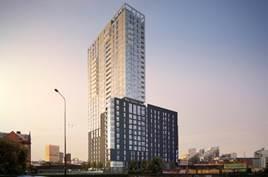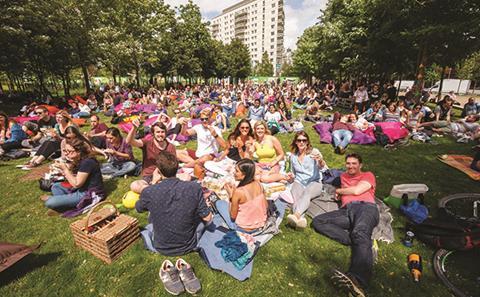It’s interesting to see the growth of institutional investment in build-to-rent developments outside London.

Until recently, opportunities for large-scale residential institutional investment were limited in the regions. The schemes that did exist were based on the traditional buy-to-let model and were less attractive for investors because of the hands-on management and administration required, making the prospects unrealistic for funds needing to invest at scale.
Now there is an increasing number of large-scale developments in the pipeline, in the major northern cities especially. Recently, it seems as if every month we get news of new schemes in Liverpool or Manchester that have either been submitted or have been granted planning permission.
However, there are few build-to-rent schemescurrently operational in the north. Among the largest of these are LaSalle’s scheme at Greengate in Manchester and The Cargo Building in Liverpool, which we are launching shortly.

It usually takes around three years from the start of construction before a larger development will be fully occupied, so it will be some time before the sector can demonstrate the net yield that regional developments will actually bring for investors.
However, experience from schemes based in London as well as overseas points to schemes succeeding in providing the sustainable, index-linked returns that mature defined benefit pension funds require, but find hard to secure in an environment of low bond and gilt yields.
Learning curve
The next few years will be a learning curve. The differentiators between institutionally backed large-scale schemes and smaller PRS ones come down to the location, the added amenities - on-site gyms and services such as free wifi - and on-site property management.

We will find out the level of premium occupiers are prepared to pay for these types of developments in areas outside London. And we will also establish whether, in reality, the amenities, added facilities and services are what really attract people to these developments and if they have an impact on the duration of tenancies.
Once we have more data around the premiums, occupancy levels and lengths of tenancies in each regional market, it can be factored into underwriting for schemes and achievable costs and yields can be confirmed at the outset.
The differentiators between institutionally backed large-scale schemes and smaller PRS ones come down to the location, the added amenities and on-site property management
Yields on build-to-rent are low in most city centre locations and while advertised rents are well recorded on online portals, agreed rents are not published or recorded centrally in the way sales values are, for example. The net yield is likely to be in the 4% to 5.5% range, so any rental premium that can be secured or costs that can be reduced sustainably will have a significant impact on the capital value.
However, investors need to remember that these assets have secure income streams and should appreciate in value, compared with commercial assets.
Despite the relative newness of the market, discussions with investment agents and in the sector more widely indicate there is a considerable amount of equity targeting regional build-to-rent - so much so that I believe the asset class is ready to launch into the mainstream of real estate sectors.






























No comments yet